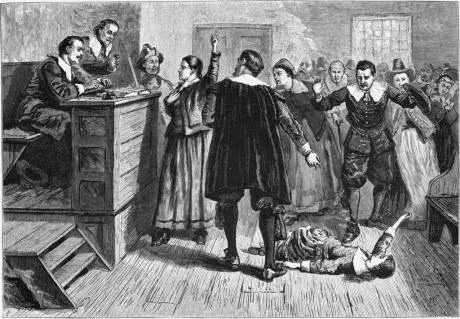The Salem Witch Trials

The Salem Witch trials started in Salem, Massachusetts in 1692 and ended in 1693. According to Smithsonian Magazine there were more than 200 people accused of witchcraft and 20 of those people were executed.
The hysteria started in January 1692 when Reverend Parris’ daughter Elizabeth and niece Abigail started to experience “violent contortions and uncontrollable outbursts of screaming.” After the doctor diagnosed the two girls with bewitchment, five other women and girls began to experience the same fits. Arrest warrants were issued in February for Reverend Parris’ slave, Tituba, and two other women. The arrested were questioned by Jonathan Corwin and John Hathorne. Tituba was the only one who confessed and told the men that there were other witches. Several more of the accused confessed and there were so many trials that the local court had too many cases. To alleviate the burden on the local court, Governor Phips created the Court of Oyer and Terminer to hear and decide any cases involving witchcraft.
John Hathorne, Samuel Sewall, and William Stoughton were among the judges on the court. They convicted Bridget Bishop on June 2, 1692 and she was hanged eight days later. Cotton Mather wrote a letter to the court discussing whether the accused should be convicted based on spectral evidence of dreams and visions since “a demon may…appear…in the shape of an innocent…man.” The court did not respond to his letter and continued with the trials.
Later that same year, on October 3, Harvard President Increase Mather spoke against spectral evidence like his son. He stated, “It were better that ten suspected witches should escape, than that one innocent person should be condemned.” On October 29, Governor Phips proclaimed that the Court of Oyer and Terminer “must fall” in response to both Mather’s requests and the fact that Phips’ wife was being questioned for witchcraft. In all, fourteen men and women were convicted by the court and died before the court was disbanded by Governor Phips.
Since the trials ended there have been attempts to right the wrongs that were inflicted on the individuals accused, those killed, and their families. The trials were declared unlawful in 1702 and in 1711, a bill passed which restored the rights and good names to the accused. It was not until 1957, though, when Massachusetts issued a formal apology for the events that took place in Salem in 1692.
For more information and resources, see our LawGuide on the Salem Witch Trials.
Library Blog

